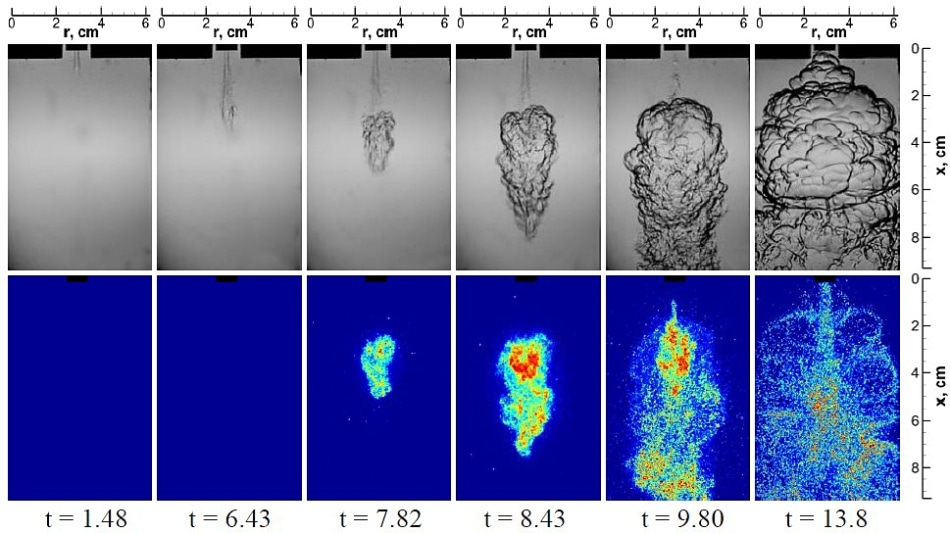Aug 8 2019
Personal cars and other automobiles may soon be powered by the same technology that is employed in jets.
 Here are sequences of images showing the jet (produced from pre-chamber on the top) penetrating into the main chamber and igniting the main-chamber mixture. (Image credit: Purdue University)
Here are sequences of images showing the jet (produced from pre-chamber on the top) penetrating into the main chamber and igniting the main-chamber mixture. (Image credit: Purdue University)
Scientists at Purdue University are now working to create pre-chamber technology for automobiles to replace traditional spark plugs.
A small chamber, known as a pre-chamber, is filled with a combination of fuel and air. The combination ignites, resulting in combustion, and small holes in the bottom of the chamber discharge the hot combustion products in the form of powerful jets, which make their way into the main chamber and cause ignition.
In comparison with conventional spark ignition, this technique offers a large surface for multiple-site ignition and quick flame propagation and improves the overall combustion efficiency.
Both active and passive pre-chambers are being taken into account. In the case of the former, additional fueling is given to the pre-chamber to enable leaner operation of the main combustion chamber. In the case of the latter, the main-chamber mixture is pushed into the pre-chamber by compression stroke via the small holes.
We have great potential at Purdue for research into automotive technology and the engines of the future. This pre-chamber jet ignition technology is an example of how researchers across engineering and science come together at Purdue to create novel solutions.
Li Qiao, Associate Professor, Aeronautics and Astronautics, Purdue’s College of Engineering
Qiao reported that the technology on which her group is working has already been employed in large-bore natural gas engines and in some F1 racing cars due to its excellent performance; however, it is new to gasoline engines.
“The auto industry is feeling the pressure to optimize these engines because of the competition from electric vehicles,” stated Qiao. “Several automotive engine companies have started exploring pre-chamber technology for passage cars.”
Presently, Qiao is teaming up with industry on design and optimization of active and passive pre-chambers for gasoline engines.
Qiao and her group have conducted tests at Purdue’s Herrick Laboratories and Maurice J. Zucrow Laboratories, the world’s largest academic propulsion lab.
Qiao and her colleagues are collaborating with the Purdue Research Foundation Office of Technology Commercialization to patent their technology. They are in search of additional partners.
Their work offers support to Purdue’s Giant Leaps celebration of the university’s global advancements in sustainability and space as part of Purdue’s 150th anniversary. Those are two of the four themes of the yearlong celebration’s Ideas Festival, intended to represent Purdue as an intellectual center solving real-world problems.